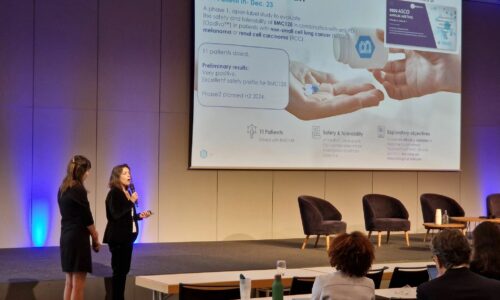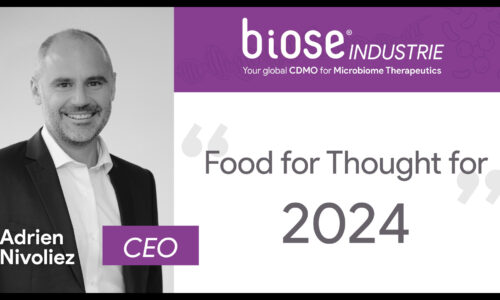An in-person event, Pharmabiotics 2022, brought together individuals from academia and industry in the microbiome field to focus on how microbiome-based drug products will become a therapeutic reality in Europe. The event was hosted by PRI, an organization dedicated to navigating the regulation of microbiome medicinal products in Europe, using a collaborative approach to improve market access and provide technical and regulatory intelligence for its members.
Describing the microbiome
A presentation by Alexandra Zhernakova of University Medical Centre Groningen, “The role of host genetics and environment in shaping the gut microbiome”, provided an overview of factors that influence the human gut microbiome as observed in large-cohort association studies. Although both genetics and environment influence the gut microbiome, the environment is by far the most important. Researchers have been able to explain around 18.7% of the inter-individual variation in the gut microbiome, with major effects from medicines, food items, and host factors such as diseases. Zhernakova cited some studies that focus on genetic contributions to microbiome composition, although power is a major problem for microbiome genome-wide association studies; 50-100K samples are needed to detect more loci.
Olaf Larsen of University of Amsterdam and Yakult provided a broad view of what we still need to know about the human microbiome in his presentation “Microbiota Management: A One Health Perspective”. To understand whether the recent rise in chronic diseases is attributable to depleted microbiomes, we need to answer questions such as: What are the critical determinants of ecosystem structure and stability? And what are the associated functionalities of the ecosystem? He says keystone taxa may be drivers of structure and functionality (see here). He gave an example of how it is possible to model microbial guilds for the creation of efficient fecal transplant analogues.
Therapeutics
A variety of approaches to microbiome-focused therapeutics were described in the conference presentations. Perhaps the most straightforward approach was described by Ana Montalban-Arques of Recolony: providing specific strains of bacteria that are lacking in those with colorectal cancer (CRC) compared to healthy individuals, for anti-tumor effects. The bacteria in question are two commensal Lachnospirales strains, delivered in gastric resistant capsules.
Sin-Hyeog Im from ImmunoBiome gave an example of how LBPs can target the immune system directly. His presentation, “Mechanism of Anti-cancer Activity of IMB001 in Enhancing Cancer Immunotherapy”, described the company’s immunostimulatory anti-cancer LBP, IMB001, which works through the priming of T-cells by macrophage in the tumor microenvironment.
Recombinant live biotherapeutic products (LBPs) were described by Maria Lluch Senar of Pulmobiotics in “Pioneering live biotherapeutics in the respiratory tract”. The company is developing genetically modified organisms for respiratory diseases, which are bacteria expressing several therapeutic proteins. Each therapeutic candidate uses a chassis – either MycoChassis or LactoChassis –and they do insertion of genetic platforms on the chassis genome. The company is currently developing therapeutics for five different indications.
The presentation “Advancing a portfolio to Late-Stage: The Synlogic Experience”, by Vasu Sethuraman of Synlogic,covered the concept of “synthetic biotics”. Differentiated drug candidates are created using programmable, precision genetic engineering combined with a well-characterized probiotic chassis. The company has Phase 2 trials are ongoing for its two most advanced candidates, SYNB1618 and SYNB1934 for phenylketonuria. In addition, they are advancing a candidate for another rare metabolic disease, homocystinuria.
Spencer Diamond, microbiologist from Banfield Lab, presented on a recent publication in Nature Microbiology in collaboration with Doudna Lab, showing a strategy for editing genomes of specific organisms living within microbial communities. The technique consists of two parts: first, they used something called environmental transformation sequencing (ET-seq) which delivered nontargeted transposon insertions to a microbial community, allowing them to track which constituents of the community were manipulable. Then, having identified the organisms responsive to genetic manipulation, they applied all-in-one RNA-guided CRISPR–Cas transposase (DART) systems to insert DNA. In this way they successfully manipulated the genes of individual members of a microbial community, without the need for culturing. This could be an important tool in the microbiome field, and in the near future will be used primarily for research purposes.
Christian Grøndahl of SNIPR Biome spoke on “Applying CRISPR to treat life-threatening diseases”. The team uses the approach of CRISPR-armed phages to achieve selective bacterial killing and modification of the microbiome, either destroying bacterial genes or adding genes. The company’s pipeline is focused on applications in oncology and immunology, with partnerships in cardio-metabolism. One example is SNIPR001, which targets antimicrobial resistance (specifically, fluoroquinolone-resistant E. coli infections) in people with hematological cancer, via selective bacterial killing while preserving the gut microbiome.
A “full ecosystem approach” was described by Isabelle Adeline of MaaT Pharma in her presentation “The guts to fight cancer”. Maat Pharma develops standardized, high-diversity microbiome ecosystem therapies for hematological malignancies and cancer applications. They currently have promising Phase 2 data for their product addressing acute Graft-vs-host-Disease; and in hemato-oncology, they also have MaaT013 and MaaT033, which aim to restore gut microbiota and improve survival in patients with liquid tumors.
Regulatory Affairs
Céline Druart of the host organization PRI spoke on “Revision of the EU BTC & Pharma legislations: An evolving regulatory landscape for microbiome-based medicinal products”. She noted that Microbiome-based Medicinal products (MMPs) are a wide spectrum of products with varying levels of characterization and control. MMPs are a type of Biological Medicinal Product, and she suggests that in the absence of a specific regulatory framework for MMPs, it is prudent to rely on applicable and relevant regulatory concepts for biological medicinal products and advanced therapeutic medicinal products, even if MMPs don’t fit perfectly within the scope of these guidelines. Druart also covered probable future changes to the European regulatory framework: ongoing revision of the Blood, Tissues & Cells legislation and the general Pharma legislation. This means substances of human origin (SoHO) will have an additional layer of legislation to take into account.
Austin Udocor of DNA Genotek / Novosanis / Diversigen gave a specific example of a regulatory journey in his presentation “The first FDA authorized device for fecal microbiome sample collections: Our journey through a new regulatory pathway and what it means for microbiome innovations”. The company used the De Novo Pathway for new technologies. After they were granted the De Novo in 2021 for Omnigene Gut Dx, the device became the first and only FDA-authorized device for gut microbiome profiling. Udocor explained that authorized devices matter because (1) they allow standardization so data can be compared between different companies and institutions around the world; and (2) they increase analytical validity, so a company can show that the microbiome data is based on good science. He advised companies to include regulatory strategy in initial product development, since “regulatory requirements are product requirements”. Not only did he recommend early engagement with Notified Bodies or Competent Authorities, but also being prepared to reply to unfavourable responses if the intended purpose for use is novel.
Intellectual Property
Michèle Paquier of Eligo Biosciences presented on “Intellectual Property Practical and strategic considerations”. She cautioned that intellectual property (IP) often comes into play too late – such as when an employee / inventor leaves the company, or confidentiality issues arise with collaborators. Paquier says IP should be considered from the beginning. It is useful to secure both product and method claims, since the combination puts the company in a stronger position in case of patent challenge; furthermore, it offers more flexibility for licensing. A product’s level of characterization and level of distinction from “natural product” (in the US in particular) are key to optimal worldwide patent protection.
Manufacturing
Claire Derlot, Head of Programs at Biose Industrie, hosted a panel discussion titled “Identifying and overcoming Manufacturing Challenges for LBPs” together with Romain Daillere of EverImmune, Adam Wilkinson of Microbiotica and Prof Sin-Hyeog Im of Immunobiome. The panelists discussed:
- Strain Safety & stability: How does a company select the right candidate and the potency marker? Biose Industrie brings their expertise to help confirm those elements, and brings additional value regarding phage investigation or strain stability markers.
- CMC process: Panelists shared tips for process development with GMP-suitable Raw Materials / Culture medium selection, as well as the impact of the manufacturing process on potency and the impact of the collection phase / lyophilization stress.
- Drug Product formulation: Participants discussed which target and which Drug Product form.
- Stability: They covered how to define expiry and factors that go into labelling.
- GMP Live Biotherapeutic Product Drug Substance and Drug Product characterization
- IND filings
During the event, Biose Industrie CEO Adrien Nivoliez also co-hosted an interactive round table discussion on “Patenting the Microbiome and its Influence on Investment”, together with Georges Rawadi and Kristin Thompson, Chief Business Officer at eureKARE. These industry experts gave young biotech leaders in the field the opportunity to interact informally and ask questions around investment and IP strategies.

